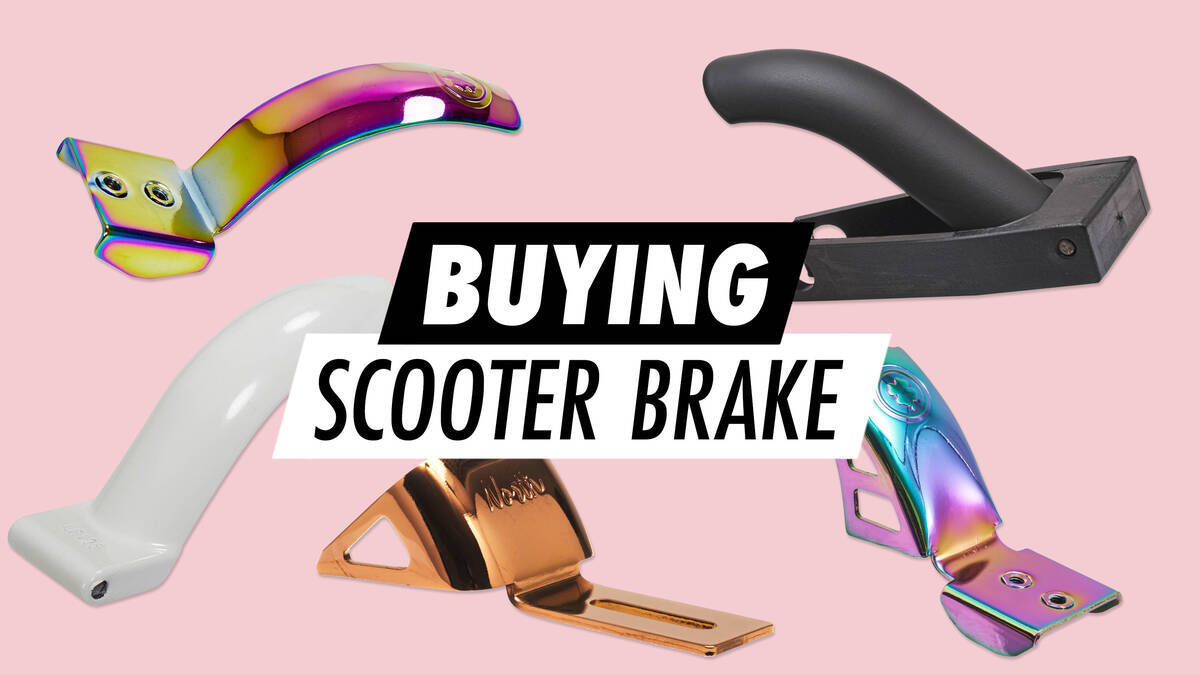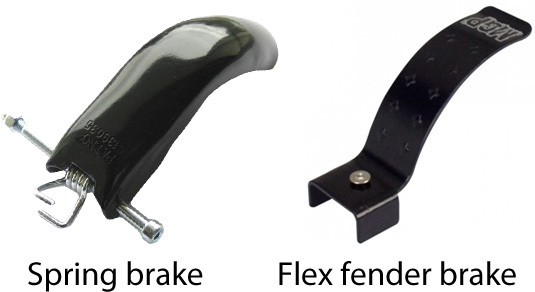Purchasing a Scooter Brake

A brake is crafted to decelerate you or avert a mishap.
Apply gentle pressure on the brake while shifting your weight backwards on the scooter to ensure optimal braking effectiveness.
Avoid obstructing your wheel/brake on the scooter, as this will lead to inadequate braking power and create flatspots on your wheel, regardless of the brand or quality of the wheel you use.
The diagram below illustrates the 2 most frequently utilised brakes.

- A spring brake is affixed to the attached bolt, which is then secured to the deck. A spring on the bolt ensures the brake is positioned upwards, away from the deck.
- A flex fender brake consists of a long metal plate that is pre-bent to contour around the wheel. It is typically attached to the deck with one or more screws. Pressing down on the metal plate will cause the entire plate to bend towards the wheel.
Both types of brakes are made for 100 mm and 110 mm wheels, usually detailed in the product specifications.
Tips:
- Avoid blocking your brake (To prevent flatspots, as a flatspot causes your wheel to bounce)
- Spring brakes consist of more components and are often considered noisier than flex fender brakes.
- Flex fender brakes tend to have a shorter lifespan due to their design.
- Maintaining a completely quiet brake over prolonged periods is not feasible.
- 110 mm wheels are incompatible with 100 mm brakes.
- 100 mm wheels will fit and operate under a 110 mm brake.
- Not all brakes are suitable for all decks. (Utilise the same brand and type)
- Flex Fender brakes may snap easily if a wheel is significantly worn down, as the plate must travel further to reach it. Always replace your wheels before they are entirely worn out!
This video demonstrates how to mount a flex fender brake on your deck:
Return to Assembling a Custom Trick Scooter
Return to Stunt Scooters Explained
